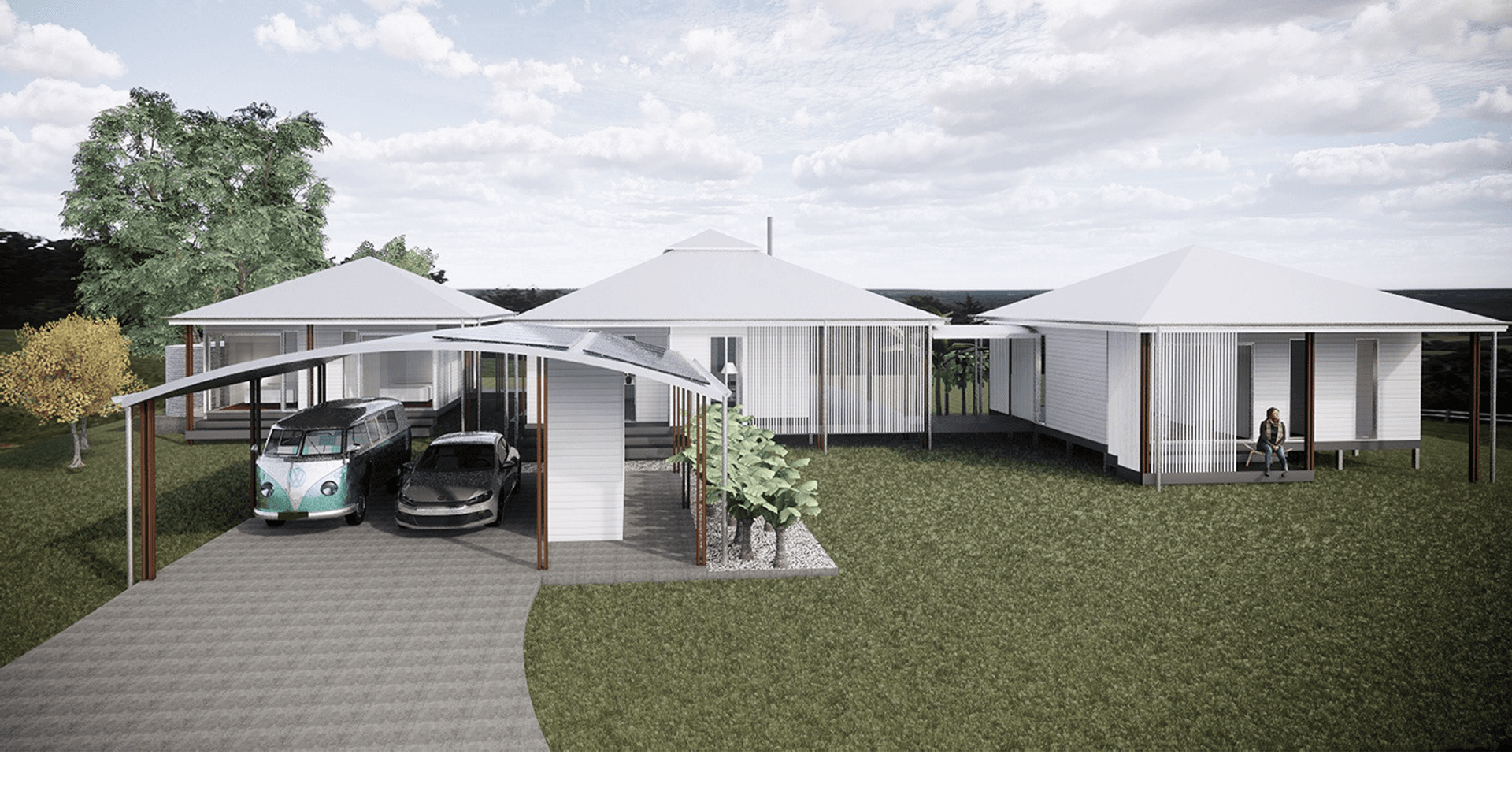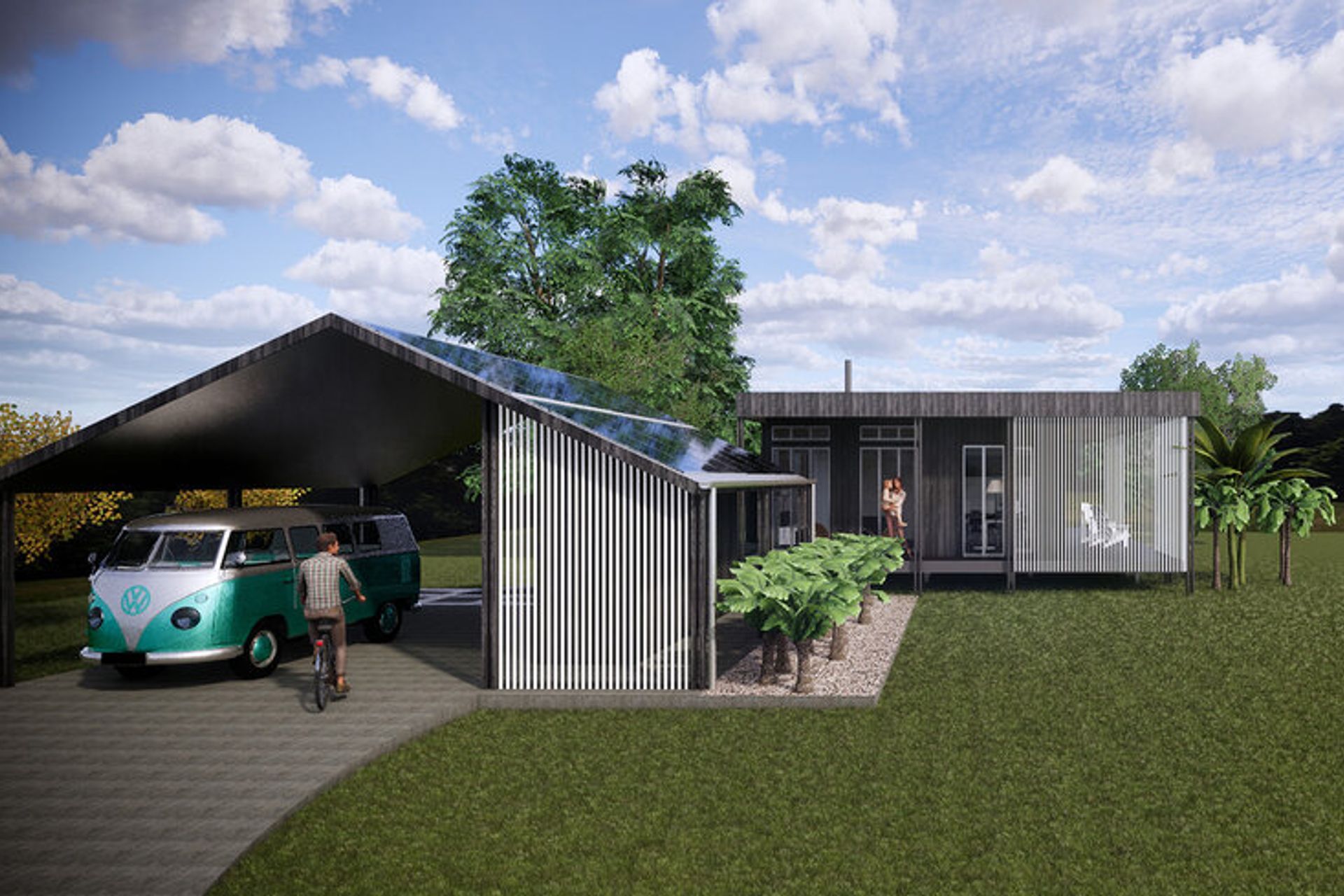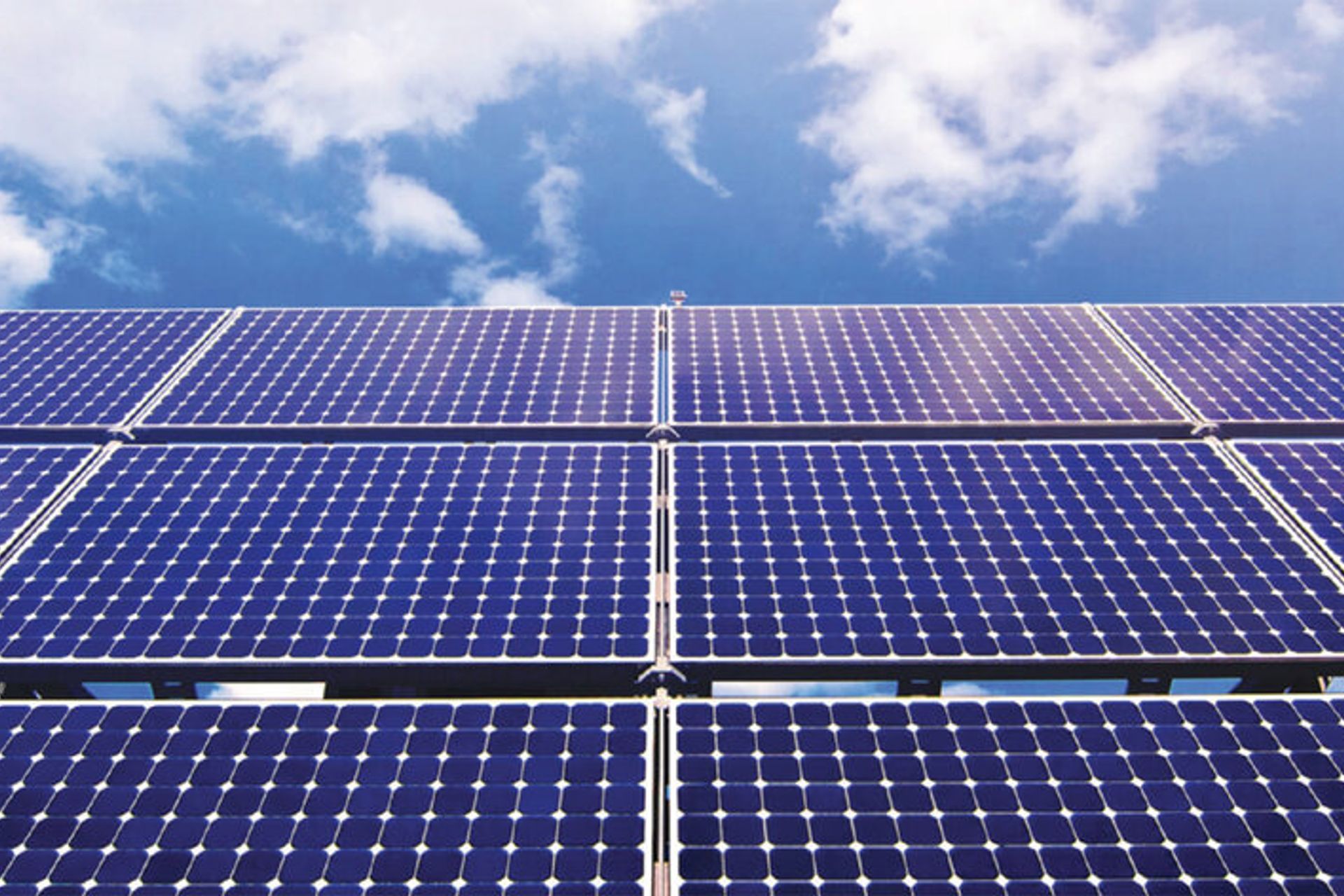Live Happy



CONTEMPORARY, ELEGANT AND STYLISH LIVING IN FLEXIBLE, COMPLETELY OFF-GRID OR GRID-CONNECTED FAMILY HOUSES... Personalised homes that delight and surprise. And, is not only Code compliant for the construction of extended family dwellings - but also cutting edge, modern designer homes that provide FREE POWER from day one.
More people are recognising that climate change will impact our children and grandchildren if we don’t reduce our greenhouse emissions. The Pavilion Off-Grid Homes philosophy is all about sustainable, modern designer homes that focus on passive climate management for comfort, cost savings and happy, healthy living.
Energy efficiency is engineered into every Pavilion Off-Grid Home via passive cooling and heating, five-star insulation with high “R” values, the most energy-efficient appliances available and living spaces that are not only modern, light and airy, but also space-efficient with contemporary crisp lines where we believe form follows function.
Built into the turnkey price of our completely off-grid range, Pavilion Off-Grid Homes include a solar Powerstation - including solar PV panels, battery storage and a backup generator that silently kicks in on those rare occasions when the solar capture or battery storage drop below the minimum capacity.
YOUR TURNKEY PRICE ALSO INCLUDES LUXURY INCLUSIONS:
Be it a scullery and walk-in pantry as part of a super stylish chef’s kitchen with quality cooking appliances, preparation surfaces and ergonomically designed workspaces - or, clever storage solutions, designer tapware, quality floor coverings, beautiful bathroom ware and well-considered, climatically sensitive living spaces that are finished to master-built standard - you’ll fall in love with your new Pavilion Off-Grid Home.
And, all designs are fully scalable so that you can create your dream family home that’s a perfect fit for all family sizes, ages and generations.


HOUSES BUILT TO CATCH THE SUN creating an entirely off-grid solution for zero carbon emissions and maximum cost savings over the life of the property.
Pavilion Off-Grid Homes also tap into the sensible design integrity of days gone by with respect to passive climate control - whilst minimising the embodied energy in construction and amenity. All homes are scalable to be able to meet Local Government Code compliance for extended family dwelling - great for young couples wanting an affordable way to get into their own house, or Baby Boomers looking to downsize and not wanting to go into a retirement village.
Pavilion Off-Grid Homes offer affordable and quality-focused designer houses with energy-efficient flexible living spaces designed for Australian families and individuals looking for an alternative to the “cookie-cutter” project homes currently available.
After careful siting, each design supports Solar PV capture - with battery storage to serve all the energy needs of multiple bed and bathroom residences.

PAVILION OFF-GRID HOMES ARE ESSENTIALLY DESIGNED AS SIMPLE PAVILIONS that can be scaled up or down - but generally feature operable timber screens, to control the light, breezes, privacy and views. In summer, slide open the screens to let in the breeze. In winter, close the screens to protect against the cool, whilst creating gentle rays of light with glimpses of the view beyond.
Construction pathways incorporate exacting tolerances with reduced build times by prefabricating the core building components off-site, with wherever possible the use of timber, a natural sustainable renewable resource.
Pavilion Off-Grid Homes also have built-in amenities for the off-grid life, including well-organised utility spaces for storing bulk purchase items, managing your energy, grey water for the garden, recycling, composting and any other health and cost-saving initiatives that are important for you and your family.

ABOUT EMBODIED ENERGY IN THE MANUFACTURE OF PV PANELS AND BATTERIES… Whist producing electricity with solar photovoltaics (PV) emits no pollution, produces no greenhouse gases, and uses no finite fossil fuel resources, it also “takes energy to save energy”. In other words, what is the “green” cost we must pay in the manufacture of this technology to create emissions-free energy over the long haul. We call this “energy payback” - how long does a solar system need to operate to recover the embodied energy including the generation of CO2 that went into the initial manufacture of the system. Additionally, based on data produced by the Australian Government Department of Industry, Science, Energy and Resources http://www.industry.gov.au, 1kWh of solar electricity generation displaces 3kWh of primary energy.

Melting silicon for the panels and refining aluminium for the frames form the main part of the manufacture of solar PV panels manufacture. Based on available information, including the mining of raw materials and transportation, manufacturing one kilowatt (kW) of a solar system using monocrystalline panels consumes about 4200 kilowatt-hours (kWh) of energy. As for lithium batteries, it takes approximately 454kWh of energy to manufacture one kWh of power storage. Lead-acid batteries require less energy to manufacture but more battery storage is required to deliver similar functionality to lithium.
Comparison of the embodied energy of three different systems:
- 6.6kW monocrystalline solar panels (say 18 typical panels); grid-connected, no batteries = 26,720kWh of embodied energy
- (2) 6.6kW monocrystalline, grid-connected, with a lithium battery, rated power storage capacity of 10kWh = 31,320 kWh of embodied energy
- (3) Off-grid 6.6kW monocrystalline, with a lead-acid battery, rated power storage capacity of 35kWh = 38,020kWh of embodied energy.
So, the energy payback period relates to “repaying” the embodied energy required to produce the system, which once paid back all further generations is counted as positive for the environment.
Forward estimates utilising Renew Magazine’s Sunulator https://renew.org.au/resources/sunulator/, (with additional information from Dutch researcher Erik Alsema https://www.nrel.gov/docs/fy99osti/24619.pdf) annual generation of a north-facing 6.6kW solar system across in different Australian locations amounts to approximately 8,745kWh in a southern State up to 11,385kWh in the northern more sunny Australian locations.
Thus, a system without batteries has an energy payback period ranging from 2.4 to 3 years.. A system that includes 10kHh of lithium battery power storage (grid-connected) means longer embodied energy payback, ranging from 2.7 to 3.5 years. With an expected 25-year solar panel lifespan this leads to at least 20 years of freedom from the sun energy. Note: you may still have some ongoing on-grid energy bills with either of these systems, particularly without any battery power storage.
Finally, if we install a completely off-grid system with 35kWh of lead-acid battery power storage you’d be looking at a payback period of 3.5 to 4.5 years. If you have long periods of heavy clouds or a spike in household power usage that necessitates the use of the backup generator – this would also add to your “carbon debt” but overall you would still enjoy a couple of decades of completely green energy (along with the financial benefit of never having a power bill to pay).
We at Pavilion Off-Grid Homes say - regardless of what level of off-grid you choose - over the lifetime of the system you will have paid back the embodied energy (“carbon debt”) in manufacture within one to four years of ownership - then emit minimal or no CO2 emissions ongoing… and, you will be enjoying massive savings on your power bill from day one.
References:
- Reddaway, Andrew (2016). “How Green is my Solar”. Renew Magazine [Issue 135] https://shop.ata.org.au/shop/renew-issue-13
- Alsema, E. (1999). “Energy Requirements and CO2 Mitigation Potential of PV Systems.” Photovoltaics and the Environment. Keystone, CO, July 1998, Workshop Proceedings. Brookhaven National Laboratory report (in press).
- Dones, R.; Frischknecht, R. (1997). “Life Cycle Assessment of Photovoltaic Systems: Results of Swiss Studies on Energy Chains.” Appendix B-9. Environmental Aspects of PV Power Systems. Utrecht, The Netherlands: Utrecht University, Report Number 97072.
- Kato, K.; Murata, A.; Sakuta, K. (1997). “Energy Payback Time and Life-Cycle CO2 Emission of Residential PV Power System with Silicon PV Module.” Appendix B-8. Environmental Aspects of PV Power Systems. Utrecht, The Netherlands: Utrecht University, Report Number 97072.
- Palz, W.; Zibetta, H. (1991). “Energy Pay-Back Time of Photovoltaic Modules.” International Journal of Solar Energy. Volume 10, Number 3-4, pp. 211-216.
